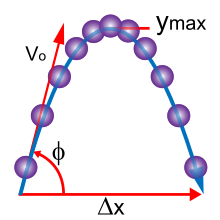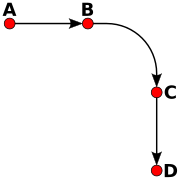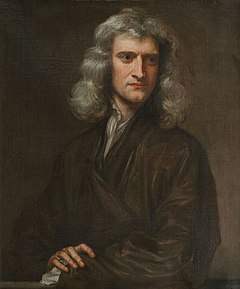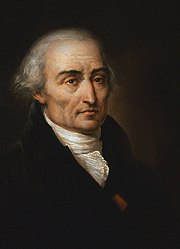Classical mechanics
Classical mechanics is a physical theory describing the motion of objects such as projectiles, parts of machinery, spacecraft, planets, stars, and galaxies.Some modern sources include relativistic mechanics in classical physics, as representing the field in its most developed and accurate form.Statics is the branch of classical mechanics that is concerned with the analysis of force and torque acting on a physical system that does not experience an acceleration, but rather is in equilibrium with its environment.While the term "Newtonian mechanics" is sometimes used as a synonym for non-relativistic classical physics, it can also refer to a particular formalism based on Newton's laws of motion.Both formulations are equivalent by a Legendre transformation on the generalized coordinates, velocities and momenta; therefore, both contain the same information for describing the dynamics of a system.All equations of motion for particles and fields, in any formalism, can be derived from the widely applicable result called the principle of least action.Objects with non-zero size have more complicated behavior than hypothetical point particles, because of the additional degrees of freedom, e.g., a baseball can spin while it is moving.Classical mechanics assumes that matter and energy have definite, knowable attributes such as location in space and speed.[12] In addition to relying on absolute time, classical mechanics assumes Euclidean geometry for the structure of space.It was introduced by the Italian-French mathematician and astronomer Joseph-Louis Lagrange in his presentation to the Turin Academy of Science in 1760[16] culminating in his 1788 grand opus, Mécanique analytique.The Hamiltonian is the Legendre transform of the Lagrangian, and in many situations of physical interest it is equal to the total energy of the system.QFT deals with small distances, and large speeds with many degrees of freedom as well as the possibility of any change in the number of particles throughout the interaction.Statistical mechanics describes the behavior of large (but countable) numbers of particles and their interactions as a whole at the macroscopic level.In the case of high velocity objects approaching the speed of light, classical mechanics is enhanced by special relativity.In case that objects become extremely heavy (i.e., their Schwarzschild radius is not negligibly small for a given application), deviations from Newtonian mechanics become apparent and can be quantified by using the parameterized post-Newtonian formalism.However, until now there is no theory of quantum gravity unifying GR and QFT in the sense that it could be used when objects become extremely small and heavy.The ray approximation of classical mechanics breaks down when the de Broglie wavelength is not much smaller than other dimensions of the system.With a larger vacuum chamber, it would seem relatively easy to increase the angular resolution from around a radian to a milliradian and see quantum diffraction from the periodic patterns of integrated circuit computer memory.The study of the motion of bodies is an ancient one, making classical mechanics one of the oldest and largest subjects in science, engineering, and technology.[19]: 54 Some Greek philosophers of antiquity, among them Aristotle, founder of Aristotelian physics, may have been the first to maintain the idea that "everything happens for a reason" and that theoretical principles can assist in the understanding of nature.While to a modern reader, many of these preserved ideas come forth as eminently reasonable, there is a conspicuous lack of both mathematical theory and controlled experiment, as we know it.In his Elementa super demonstrationem ponderum, medieval mathematician Jordanus de Nemore introduced the concept of "positional gravity" and the use of component forces.This break with ancient thought was happening around the same time that Galileo was proposing abstract mathematical laws for the motion of objects.He may (or may not) have performed the famous experiment of dropping two cannonballs of different weights from the tower of Pisa, showing that they both hit the ground at the same time.Here they are distinguished from earlier attempts at explaining similar phenomena, which were either incomplete, incorrect, or given little accurate mathematical expression.The combination of Newton's laws of motion and gravitation provides the fullest and most accurate description of classical mechanics.Newton had previously invented the calculus; however, the Principia was formulated entirely in terms of long-established geometric methods in emulation of Euclid.Newton, and most of his contemporaries, with the notable exception of Huygens, worked on the assumption that classical mechanics would be able to explain all phenomena, including light, in the form of geometric optics.Even when discovering the so-called Newton's rings (a wave interference phenomenon) he maintained his own corpuscular theory of light.Emphasis has shifted to understanding the fundamental forces of nature as in the Standard Model and its more modern extensions into a unified theory of everything.






Classical Mechanics (disambiguation)Second law of motionHistoryTimelineTextbooksAppliedCelestialContinuumDynamicsField theoryKinematicsKineticsStaticsStatistical mechanicsAccelerationAngular momentumCoupleD'Alembert's principleEnergypotentialFrame of referenceInertial frame of referenceImpulseInertiaMoment of inertiaMechanical powerMechanical workMomentMomentumTorqueVelocityVirtual workNewton's laws of motionAnalytical mechanicsLagrangian mechanicsHamiltonian mechanicsRouthian mechanicsHamilton–Jacobi equationAppell's equation of motionKoopman–von Neumann mechanicsDampingDisplacementEquations of motionEuler's laws of motionFictitious forceFrictionHarmonic oscillatorInertialNon-inertial reference frameMotionlinearNewton's law of universal gravitationRelative velocityRigid bodyEuler's equationsSimple harmonic motionVibrationRotationCircular motionRotating reference frameCentripetal forceCentrifugal forcereactiveCoriolis forcePendulumTangential speedRotational frequencyAngular accelerationfrequencyKeplerGalileoHuygensNewtonHorrocksHalleyMaupertuisDaniel BernoulliJohann Bernoullid'AlembertClairautLagrangeLaplacePoissonHamiltonJacobiCauchyLiouvilleAppellKoopmanvon Neumannphysical theoryprojectilesmachineryspacecraftplanetsgalaxiessubstantial change in the methods and philosophyNewtonian mechanicsIsaac NewtonGottfried Wilhelm LeibnizLeonhard EulerbodiesforcesJoseph-Louis LagrangeWilliam Rowan Hamiltondetermine how it will move in the futureChaos theoryspeed of lightquantum mechanicsspecial relativitygeneral relativityrelativistic mechanicsequilibriummathematicsvectorscalarkinetic energypotential energyvariationconfiguration spacephase spaceHamilton–Jacobi theoryprinciple of least actionNoether's theoremconservation lawssymmetries